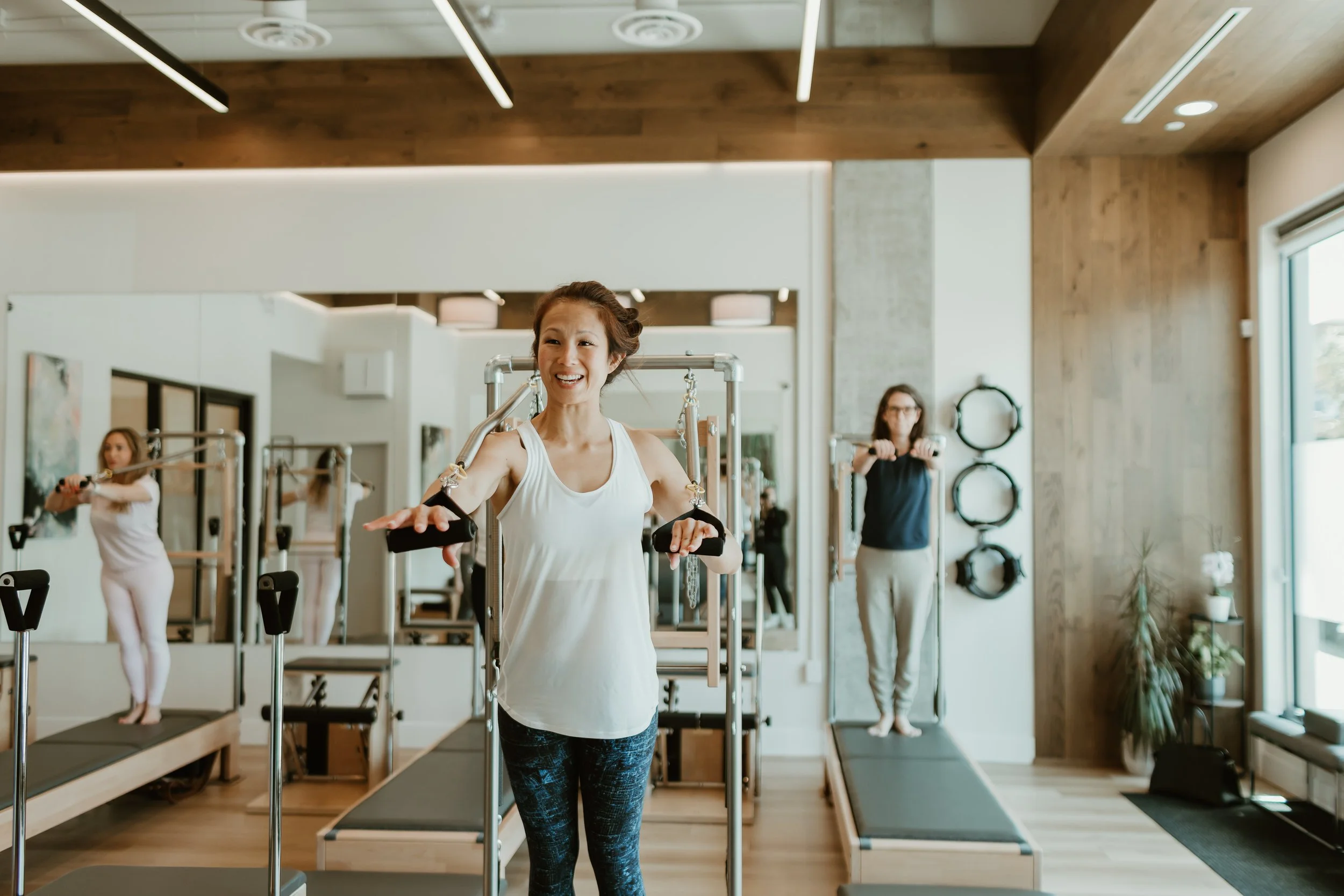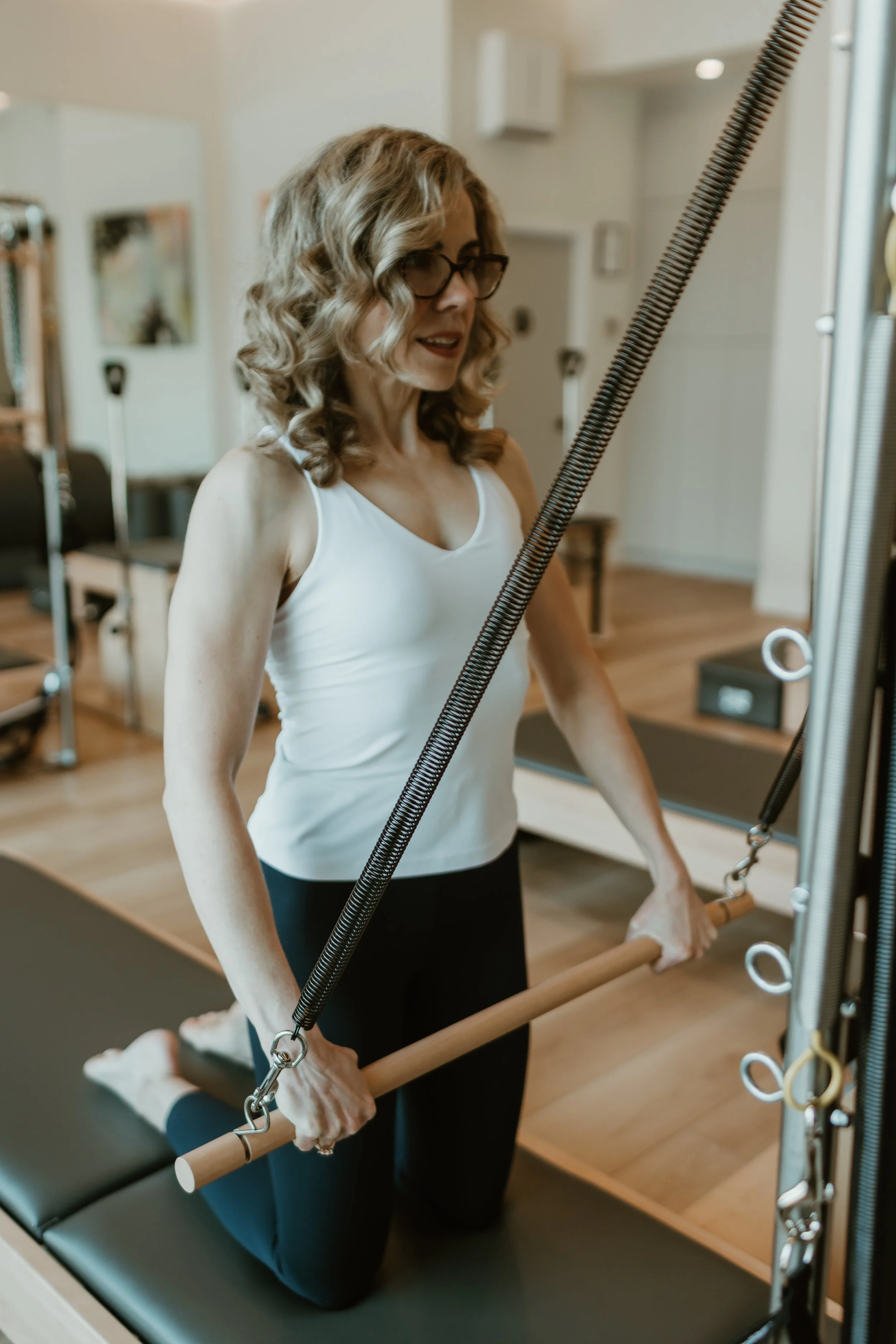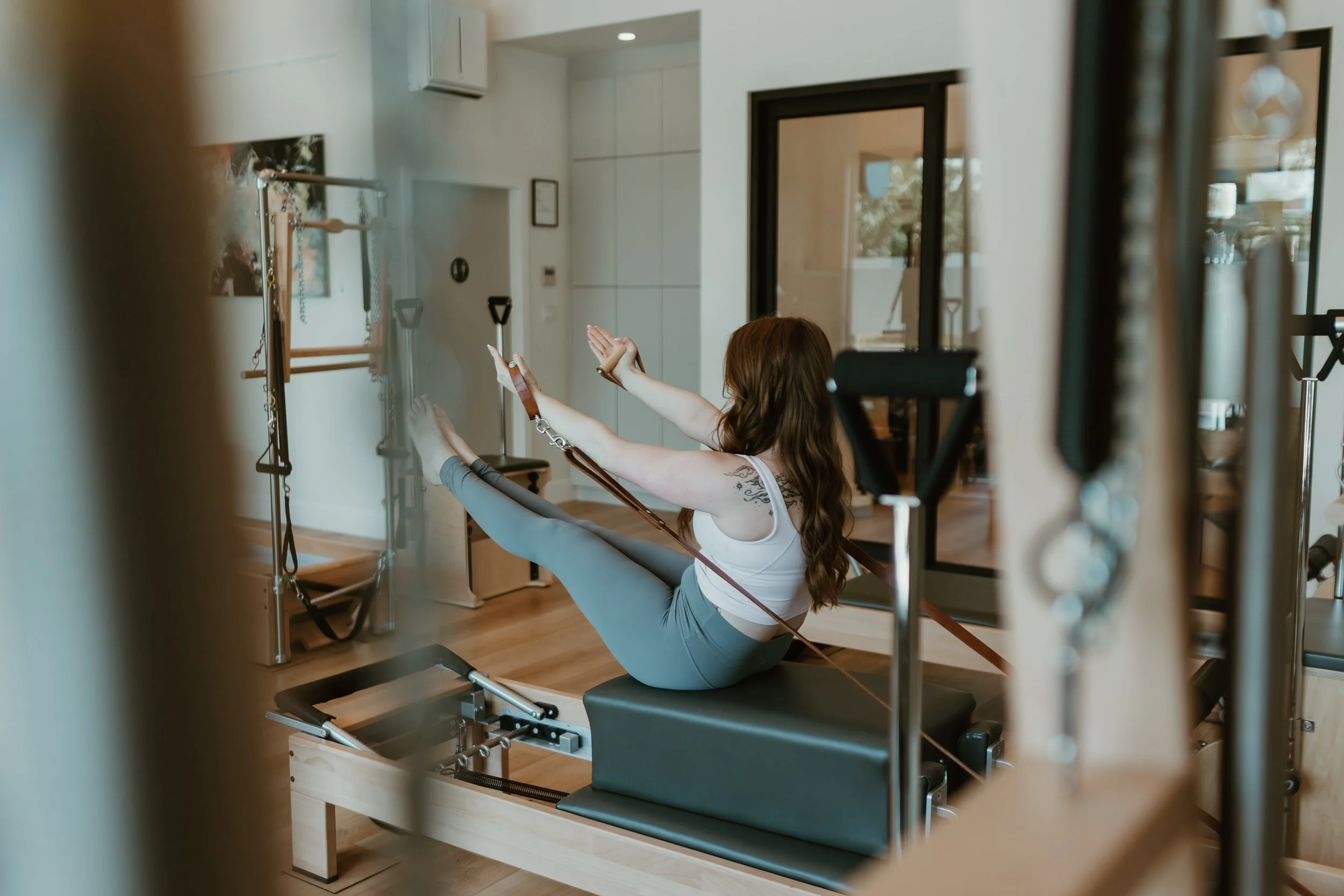Hypoalgesic Effects of Exercise
It’s well documented that physical exercise is an important component in the treatment and rehabilitation of those living with chronic pain (Naugle et al.). Not just those living in pain, but for every one as exercise is vital to our overall health and wellbeing (Naugle et al.).
A meta-analytic review from 2012 discovered that moderate intensity aerobic exercise and resistance training reduces the sensitivity to painful stimuli in healthy individuals and those living with chronic pain (Naugle et al.). This indicates that exercise brings about a hypoalgesic response. Hypoalgesic means receiving a reduced sensitivity to pain, resulting in a weaker than normal response to stimuli that would typically be painful.
From decreased pain sensitivity to higher pain thresholds a single session of aerobic and/or resistance exercise can lead to a temporary hypoalgesic effect. That is why after your 55 minute Pilates session, our bodies feel so good. We may feel tired, but we also have a positive sense of wellbeing.
In the referenced meta-analysis the researchers wanted to find out what types of exercise produced a hypoalgesic effect most positively. They looked at aerobic exercise (getting our heart rate up), resistance exercise (strengthening our muscles), and isometric exercise (holding an exercise at the end range of the movement for a period of time).
The results of the study suggests that aerobic, resistance, and isometric exercise all reduce the perception of pain (Naugle et al.). The largest effect was found with isometric exercise. Isometric exercise appears to exert a generalized pain inhibitory response, with holding the contraction for 2 minutes or so at a moderate intensity induces the best response (Naugle et al.). For aerobic exercise moderate to slightly higher intensities for durations of 30 minutes also decreased the pain response (Naugle et al.). Resistance exercise at moderate intensities (75% 1RM) was also the sweet spot for the hypoalgesic effect.
I love reading these types of studies because it provides me the motivation and commitment to stick with my exercise program even though life gets busy or draining. The meta-analysis confirmed why I enjoy exercising at moderate intensities. My runs are not slow, but also not sprints. If I do sprint or hill training it’s for short durations as to not overdo it. My resistance training is the same: I like to focus on 10-12 reps per movement and get a little sweaty, but not to the point of passing out and feeling drained.
Moderate intensity exercise has the greatest effect on our feel good state after exercise. Gentle consistency does the body good 😊 We get stronger, gain energy, fix muscle imbalances that can lead to pain and/or injury, and now we know exercise also builds our tolerance of pain. How cool is that?
Longbox Upright Teaser is an example of an isometric exercise for the abdominals (everyone’s favourite, right?)
Resources
Naugle, Kelly M., et al. “A Meta-Analytic Review of the Hypoalgesic Effects of Exercise.” The Journal of Pain, vol. 13, no. 12, Dec. 2012, pp. 1139–50. DOI.org (Crossref), https://doi.org/10.1016/j.jpain.2012.09.006.




